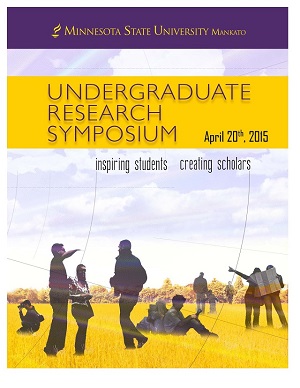The Impact of Build Orientation on the Tensile, Flexural, and Shear Properties of Fused Deposition Modeling Parts
Location
CSU Ballroom
Start Date
20-4-2015 2:00 PM
End Date
20-4-2015 3:30 PM
Student's Major
Integrated Engineering
Student's College
Science, Engineering and Technology
Mentor's Name
Jacob Swanson
Mentor's Email Address
jacob.swanson@mnsu.edu
Mentor's Department
Integrated Engineering
Mentor's College
Science, Engineering and Technology
Description
Fused Deposition Modeling (FDM) is an additive manufacturing process (3D printing) used extensively for rapid prototyping. FDM has recently become a viable option for producing inexpensive low volume end-use parts. Because FDM parts are built in layers, the resulting structure is anisotropic, meaning the mechanical properties are dependent on the build orientation. The impact of build orientation on the mechanical properties is of great interest to those utilizing FDM to produce end-use products. The manufacturer of the FDM machine used in this research provides tensile properties for one build orientation, and bending properties for two build orientations. Literature review yielded some results on the effects of build orientation on tensile properties, very little on bending properties, and none on shear properties. A series of tests were conducted in accordance with ASTM standards to determine the tensile, flexural, and shear moduli, as well as ultimate strengths, of acrylonitrile butadiene styrene (ABS) printed parts in the three principal build orientations. A torsion testing apparatus was built to determine the shear properties. All tests were repeated using parts machined from bulk ABS as a comparison. It was found that orientations that resulted in tensile forces acting normal to the planes of the layers were significantly weaker than the rest. This was true for tensile, bending, and shear. The strength of the printed parts ranged from 60% to 90% of machine ABS depending on build orientation and type of test. Results can provide build guidelines for producing stronger parts.
The Impact of Build Orientation on the Tensile, Flexural, and Shear Properties of Fused Deposition Modeling Parts
CSU Ballroom
Fused Deposition Modeling (FDM) is an additive manufacturing process (3D printing) used extensively for rapid prototyping. FDM has recently become a viable option for producing inexpensive low volume end-use parts. Because FDM parts are built in layers, the resulting structure is anisotropic, meaning the mechanical properties are dependent on the build orientation. The impact of build orientation on the mechanical properties is of great interest to those utilizing FDM to produce end-use products. The manufacturer of the FDM machine used in this research provides tensile properties for one build orientation, and bending properties for two build orientations. Literature review yielded some results on the effects of build orientation on tensile properties, very little on bending properties, and none on shear properties. A series of tests were conducted in accordance with ASTM standards to determine the tensile, flexural, and shear moduli, as well as ultimate strengths, of acrylonitrile butadiene styrene (ABS) printed parts in the three principal build orientations. A torsion testing apparatus was built to determine the shear properties. All tests were repeated using parts machined from bulk ABS as a comparison. It was found that orientations that resulted in tensile forces acting normal to the planes of the layers were significantly weaker than the rest. This was true for tensile, bending, and shear. The strength of the printed parts ranged from 60% to 90% of machine ABS depending on build orientation and type of test. Results can provide build guidelines for producing stronger parts.
Recommended Citation
Bock, Noah. "The Impact of Build Orientation on the Tensile, Flexural, and Shear Properties of Fused Deposition Modeling Parts." Undergraduate Research Symposium, Mankato, MN, April 20, 2015.
https://cornerstone.lib.mnsu.edu/urs/2015/poster_session_B/30




